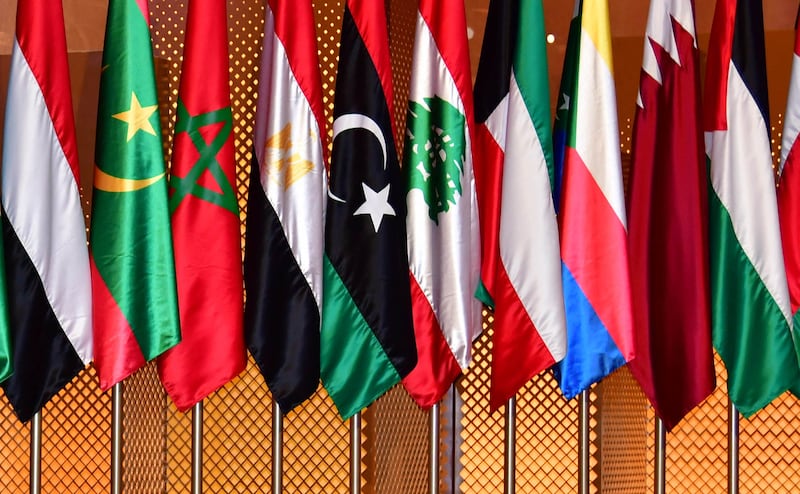Ever wondered why the flags of so many Arab states use the colours red, black, green and white?
Many of the region’s striking flags have changed numerous times over the past century as governments have shifted, wars have been fought and political allegiances have altered.
Others have stayed constant, such as the UAE flag since the country's formation more than 50 years ago.
Flags often show regional similarity, such as the crosses of Scandinavia and the multicoloured flags of Africa, said Prof Elie Podeh, lecturer in the department of Islamic and Middle Eastern Studies at the Hebrew University of Jerusalem.
But why do the same four colours appear so regularly in the flags of the Arab world?
Here is a look at how some of the flags of the region were chosen.
Why are the pan-Arab colours so widely used?
One oft-cited reason is that these four pan-Arab colours each represent a different period of Arab history, with the black used by the Rashidun and Abbasid caliphates, the white of the Umayyads, the green of the Fatimids and the Rashidun successors of the Prophet Mohammed — and Islam generally — and the red of the Hashemite dynasty.
Another theory comes from a 14th-century verse by Iraqi poet Safi al-Din al-Hilli, which reads: “White are our acts, black our battles, green our fields, and red our swords.”
It is thought the colours were first combined in 1916 in the flag of the Arab Revolt against the Ottoman Empire, which was designed by British diplomat Sir Mark Sykes.
“There is a certain commonality between many of the Arab states,” Prof Podeh told The National. “It indicates a certain symbolism, that there is a connection, a similarity, there is a commonality between the people in the area now. It's not only the Arab language.
“That's very much relevant also to the UAE because the flag consists of the traditional Arab colours. When we talk about the traditional Arab colours, it's not only pan-Arab, but it's also Islamic colours. It goes back to the Prophet Mohammed, the green and the red goes to the Ottomans. It is very much relevant to the history and the identity.
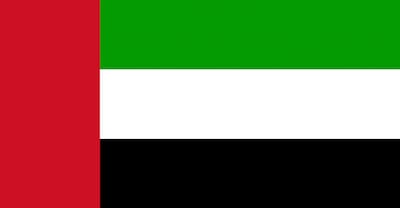
“Also, it is very important to know, I think, that there were, in the past at least, frequent changes in the flags [of the region].
“Now, if you look at Iraq and Syria, Lebanon is an exception, Jordan is an exception, the UAE has not changed. Even Egypt, the biggest country, always has a very strong identity, [but] they have changed the flag.
“So it says something about the fact that the symbolism is [open] to changes, and sometimes it depends on the owners on the narrative. And whenever there is a change of government or whatever, they might also change the symbolism. And this is unique to the Arab world in general.”
Of the 22 members of the Arab League, 10 use the green, white, black and red. Of the other 12 countries, most rely on one of the four colours, usually red or green, while nine use Islamic symbols, such as the star, crescent or sword, on their flags.
The colours “embody certain virtues, or what are seen as virtues, whether it's the blood of the colonial struggle, the green of the land, black that can also be a symbol of resistance”, Dr Anthony Gorman, a senior lecturer in Islamic and Middle Eastern Studies at the UK’s University of Edinburgh, told The National.
“I don’t really have a favourite, but what I do find interesting is the way flags change over time with a different regime or political orientation. That change over time is true of Egypt, true of Syria, true of Lebanon.
“Flags are often about a national identity. The flag offers the utility of signalling an ideology.”
UAE
The distinctive red, green, white and black of the UAE flag is shared by many other Arab states. Famously, the origins of the UAE’s flag lie in the story of a 19-year-old who in 1971 won a competition to design the flag of the new state.
“Clearly we've got the colours, haven't we? Stressing the Arab-ness. And unlike the other states of the Gulf, Arab is in the name of the UAE,” said Dr Gorman, an Australian who has worked at the Scottish university for 15 years.
“If you were talking about the flag and seeking to explain it, you would say the red on the UAE flag references [the red on the individual flags of each emirate], wouldn't you? Rather than necessarily say it's the red of the pan-Arab flag, or you could say both.
Kuwait
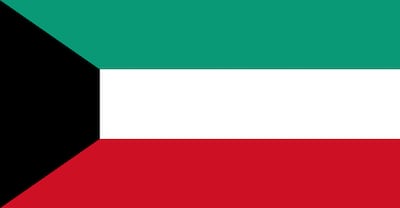
“The same is true of Kuwait, of course, in terms of the flag, stressing that the Arab brotherhood, we were one of you. You might think that was somehow different. But we want to stress a commonality.”
Kuwait’s flag — similar to that of its neighbour across the Arabian Gulf, with the pan-Arab colours in a different arrangement — features black trapezium standing vertically aside green, white and red stripes. It has been hoisted since 1961 after many years with a range of red designs, with varieties similar to those of Turkey and Bahrain.
Saudi Arabia
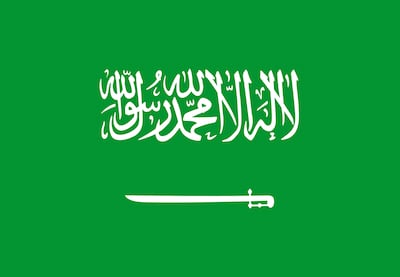
The modern flag of Saudi Arabia has been used since 1973. A green background features an inscription, or shahada, in white, above a sword. The shahada reads: “There is no deity but God. Mohammed is the Messenger of God”.
“Of course, [modern] Saudi Arabia is a recently established state,” said Dr Gorman. “If you're looking at the two main symbols, the sword and the shahada, the sword can be interpreted in a sort of literal sense of a militant struggle, it might also be taken as being just a [symbol of] struggle, the struggle of faith. But it's certainly a martial symbol.”
Bahrain and Qatar

These Gulf neighbours hoist strikingly similar designs — both featuring a white band with a serrated line on the left, though where Bahrain’s features a bright red on the right, Qatar’s incorporates maroon, while also having fewer points and a different length-to-width ratio.
The flags unsurprisingly share a history, with both countries historically using entirely red flags until they were modified with a white vertical stripe to appease the British.
“I have read that the particular shade of the Qatar flag is a result of strong sunlight on what used to be a brighter red,” said Dr Gorman. “It is interesting that they don't reference at all the pan-Arab colours, they choose to reference that sort of a local tradition of the red flag.
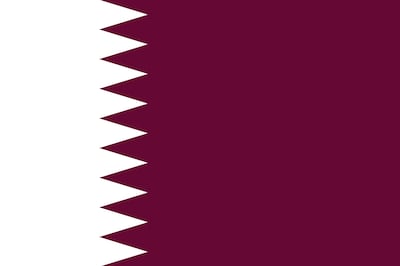
“These were ruling families who had been in power regionally for quite some time, 200 years or more.
“The decision-makers might have been thinking, at the time in the late 1960s and early 1970s, we need a clear statement of who we are, we don't just want to be a sort of an addendum to the broad Arab nation. They're making a rather strong statement of their own identity.”
Yemen
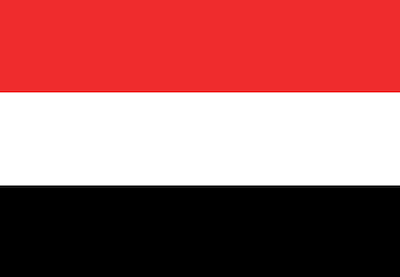
Yemen’s simple tricolour flag displays equal stripes of red, white and black, adopted for the unification of North Yemen and South Yemen in 1990. It looks like the flag of Egypt, without the golden eagle. Officially, black stands for the dark days of the past, white for a bright future and red the blood of the struggle for independence and unity.
“It's an interesting question as to why Yemen didn't adopt the green,” said Dr Gorman.
Oman

Oman’s flag is striking both for its design and for being unique in the region. It was introduced in 1970 by the late Sultan Qaboos, who also changed the country’s name to the Sultanate of Oman. The white stands for peace and prosperity, the red for battles fought against foreign invaders, and green the fertility of the land. The national coat of arms — two crossed swords, a dagger and a belt — features in the top left corner.
Egypt
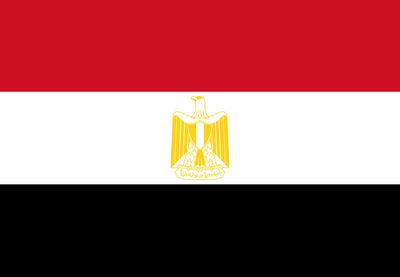
“Egypt was part of the Ottoman Empire until 1914,” said Dr Gorman. “So before that, even after that, the dominant symbol — that goes from red in the 19th and early 20th century to green in the inter-war period — is the crescent and the star, which references the Ottoman Empire and the connection there.
“But with the fall of the monarchy in 1952, that Ottoman and royalist reference is dropped, and instead we have red and black with the Eagle of Saladin, the great Muslim warrior who held power, not only in Egypt, but certainly in Egypt. That eagle is a closer territorial reference of Egypt, whereas the classic pan-Arab flags don’t really have a local reference as such.
“And then when Egypt joined in 1958 with Syria to become the United Arab Republic, the eagle was dropped and the two stars put in, representing the northern province, which was Syria, and the Southern Province, which was Egypt.
Lebanon
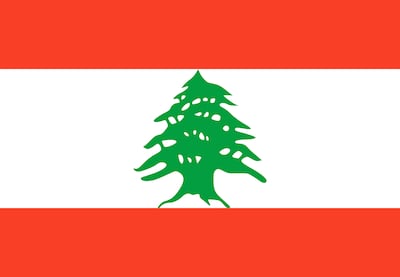
“In Lebanon, the cedar is the [local] reference there,” said Dr Gorman of the Lebanese cedar tree, a symbol of Maronite Christians which is described in the Bible as graceful and beautiful, and also strong and durable.
“Lebanon more or less had the French flag with a cedar on it until 1943, when it became two red stripes, rather than the blue.”
Syria
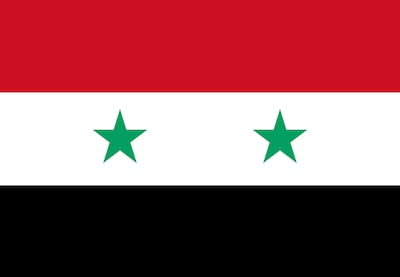
Syria's flag adopted the same configuration as that of the United Arab Republic, after dropping the design in the 1970s, Dr Gorman said.
“Syria during the early 1920s had a French flag in the corner — a little bit like the Union Jack on an Australian flag — then in the 1920s and 1930s that’s dropped [for] a more pan-Arab configuration.
“Why it went back to what we can call the UAR flag, that’s an interesting question. But it might say [that] Syria, perhaps more than all of the other Arab states did have this strong rhetorical commitment to the Arab cause, particularly in relation to Palestine.”
Iraq
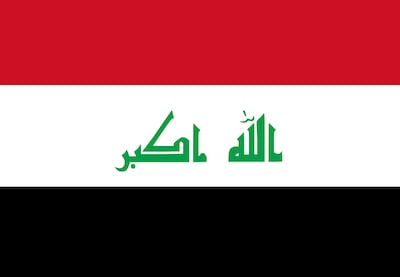
“We still have the pan-Arab colours,” said Dr Gorman of Iraq’s flag. “But you have the Allahu Akbar, the green in the centre. If you go back a bit, there were three stars, which fitted with the Baath ideology: unity, freedom, socialism. [In 1991], Saddam Hussein declares himself to be descended from the family of the Prophet and Allahu Akbar goes on the flag between the three stars.” The stars were dropped after 2003 and the collapse of Saddam Hussein’s regime.
Jordan

Based on the flag of the Arab Revolt against the Ottoman Empire during the First World War, the only clear differences are a longer red triangle featuring a seven-pointed star. No changes were made when Jordan gained independence from Transjordan in 1946.
Palestine
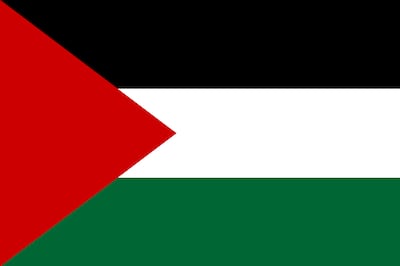
Again a show of the pan-Arab colours, this time a red triangle at the hoist plus three equal horizontal stripes of black, white and green. The flag was formally endorsed by the Palestine Liberation Organisation in 1964. Restrictions on flying the flag were lifted by Israel in 1993 after negotiations with the PLO, allowing its representation of the State of Palestine and the Palestinian people.
Tunisia
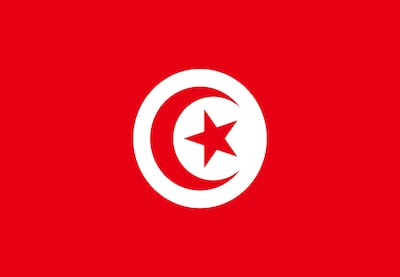
“Tunisia’s flag fits in with the Ottoman symbol of the crescent and the star,” said Dr Gorman. “The Ottoman authority extended as far as modern-day Algeria, not to Morocco. So the Moroccan flag doesn't have the crescent and star.
“Tunisia did have a particular closeness to the Ottoman Empire, more than Libya or Algeria, for example. Tunisian Syrian troops were sent to the Crimean War to help the Ottomans.
“Tunisia as a state has a longer trajectory than Libya, which was a number of Italian provinces for some decades, and then Algeria, which of course was French territory until the 1960s. So perhaps the Tunisians wanted to stress the continuity with an Ottoman heritage at the same time, as making something of their identity.”
